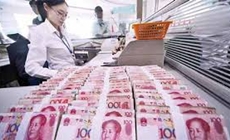China’s credit binge could lead to banking crisis: watchdog
19 Sep 2016
China's huge credit binge has increased the risk of a banking crisis in the world's second biggest economy in the next three years, according to a global financial watchdog.
 An early warning of financial overheating – the gap between credit and GDP – hit 30.1 in China in the first quarter of this year, a report from the Bank for International Settlements (BIS) said on Sunday.
An early warning of financial overheating – the gap between credit and GDP – hit 30.1 in China in the first quarter of this year, a report from the Bank for International Settlements (BIS) said on Sunday.
Any level above 10 suggests that a crisis will occur ''in any of the three years ahead'', the BIS said. China's indicator is way above the second highest level of 12.1 for Canada and the highest of the countries assessed by the BIS.
Debt has played a key role in shoring up China's economic growth following the global financial crisis. Outstanding government, corporate and household debt reached 255 per cent of GDP in 2015, fuelled in large part by a surge in company borrowing, up from 220% just two years earlier.
China's bank lending in August more than doubled from the previous month, with much of the gain down to strong mortgage demand.
China's top banks are lending more to homebuyers and developers than at any time since at least the global financial crisis.
The BIS quarterly review also said that financial markets had coped well with the Brexit vote and other potentially disruptive political developments but asset prices may be running too high and the risks to market stability were growing.
Asset valuations were high, especially given that the foundations they are built on may not be so solid. It did not explicitly say that stock and bond markets were waiting to burst.
BIS reports are not known for their stark language and blunt warnings, but they offer an insight into what is occupying the thoughts of the world's most powerful and important central bankers.
''There has been a distinctly mixed feel to the recent rally – more stick than carrot, more push than pull, more frustration than joy. This explains the nagging question of whether market prices fully reflect the risks ahead,'' said Claudio Borio, head of the BIS monetary and economic department.
''The apparent dissonance between record low bond yields, and sharply higher stock prices with subdued volatility cast a pall over such valuations. Banks' depressed equity prices and budding signs of tension in bank funding markets added another sobering note,'' the Switzerland-based BIS added.
Coping with Brexit
Central bank pledges after Brexit to provide liquidity and ensure smooth market functioning if needed, and the perceived shift towards a more accommodative global monetary policy framework soothed market jitters after Brexit, the BIS said.
This helped ensure markets functioned smoothly, especially in fixed income markets, even though the UK referendum outcome took markets by surprise.
The perception of ''lower for longer'' global monetary policy drove bond yields to record low levels, compressed corporate bond spreads, and pumped up stock markets and emerging market bonds.
''As Brexit receded in the financial markets' rear-view mirror, exuberance resumed in full force,'' said the Switzerland-based BIS in its review headed ''dissonant markets''.
On top of potential asset bubbles, risks include the increased reliance on electronic trading platforms and proliferation of trading algorithms, the BIS said. Both reduce the human element in trading, help lower trading costs and boost liquidity in normal circumstances, the BIS said.
''[But] the spread of complex and often opaque trading strategies has raised concerns about potential implications for market stability in times of stress,'' the BIS said.
Pressures in the banking system are building too. Low and even negative interest rates, notably in the eurozone and Japan, have hurt banks' profit margins and depressed the value of their shares.
''Recent strains in money markets added to this overall adverse landscape,'' the BIS said, noting that US money market regulatory reform has led to heavy outflows of around $250bn (£192bn) from the sector and pushed up Libor rates and spreads.






















